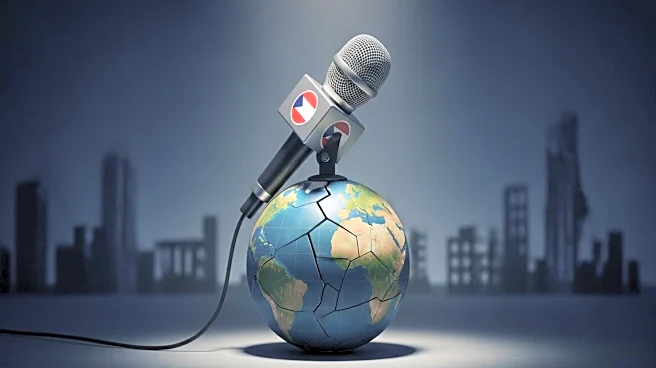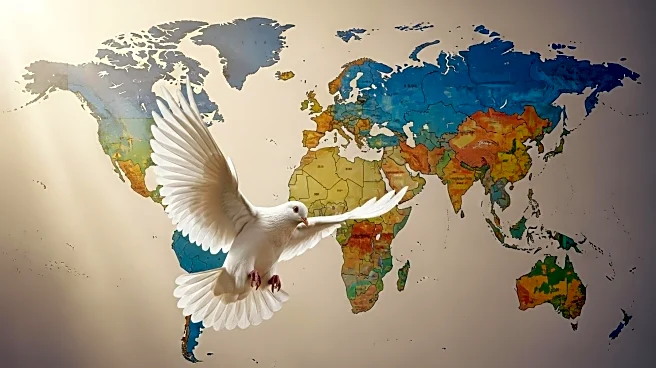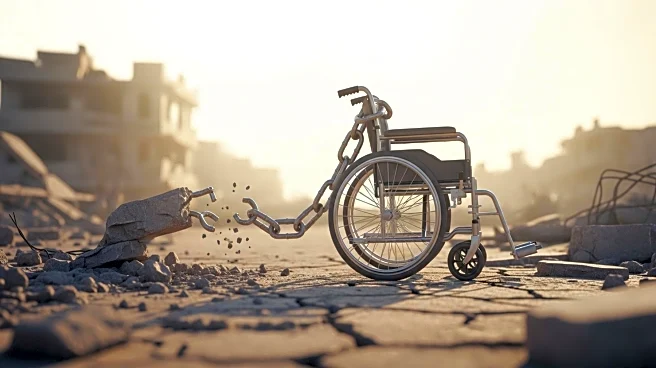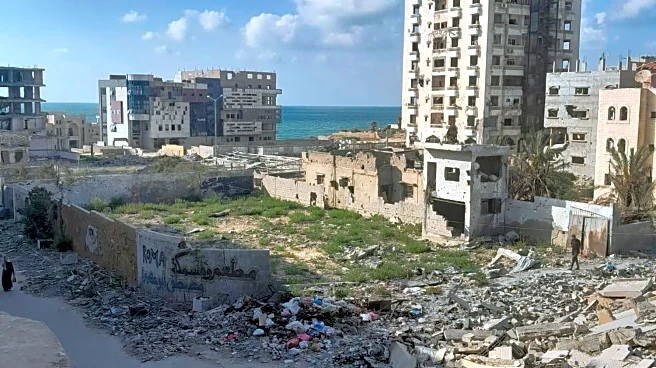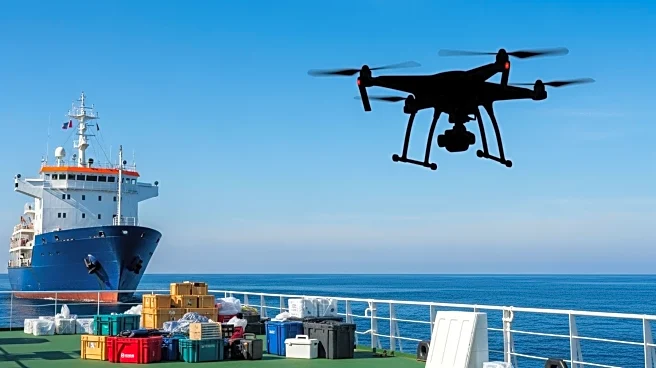What's Happening?
In Gaza, the start of the school year is marked by severe challenges due to ongoing conflict and humanitarian crises. Teachers like Alaa Abu Sabt are conducting classes in makeshift educational tents, lacking basic supplies such as pens, paper, and textbooks. The educational environment is dire, with no bathrooms or water available, and children often arrive late due to the necessity of fetching water from aid trucks. Many students have lost family members to the conflict, and the schools themselves have been damaged or destroyed. Despite efforts by the Palestinian Authority to offer virtual schooling, the lack of resources and reliable internet makes this solution impractical for many families.
Why It's Important?
The situation in Gaza highlights the broader humanitarian crisis affecting education and daily life. With schools serving as shelters from hunger and fear, the educational system is struggling to maintain normalcy. The lack of resources and infrastructure not only impacts the immediate educational needs but also threatens the long-term development and literacy rates in the region. This crisis underscores the urgent need for increased humanitarian aid and international intervention to support the basic needs of the population, including education, food, and medical care.
What's Next?
The continuation of conflict and humanitarian challenges in Gaza suggests that the educational crisis will persist unless significant international aid and intervention are provided. Stakeholders, including international organizations and governments, may need to prioritize humanitarian aid distribution and infrastructure rebuilding to ensure that children in Gaza can access education and basic necessities. The situation calls for a coordinated effort to address both immediate needs and long-term solutions for the affected population.
Beyond the Headlines
The educational crisis in Gaza reflects deeper issues of displacement, loss, and survival in a conflict zone. The psychological impact on children, who are growing up amidst violence and instability, could have long-term effects on their mental health and societal integration. The lack of educational resources and infrastructure not only affects current learning but also poses challenges for future opportunities and economic development in the region.

